(via BoringEnormous)




(via BoringEnormous)
More Posts from Ourvioletdeath and Others

You’re teleported to 44 BCE Rome in your everyday street clothes. You’re brought before Caesar and he believes you might be from the future, hoping to bring him fortune. One day he questions you, asking “How Do I Die?”

Is an immunization for stress on the horizon?
Can probiotics fend off mood disorders?
It’s too early to say with scientific certainty, but a new study by CU Boulder researchers suggests that one particular beneficial bacteria can have long-lasting anti-inflammatory effects on the brain, making it more resilient to the physical and behavioral effects of stress.
The findings, if replicated in clinical trials could ultimately lead to new probiotic-based immunizations to protect against posttraumatic stress disorder (PTSD) and anxiety or new treatments for depression, the authors say.
“We found that in rodents this particular bacterium, Mycobacterium vaccae, actually shifts the environment in the brain toward an anti-inflammatory state,” said lead author Matthew Frank, a senior research associate in the Department of Psychology and Neuroscience. “If you could do that in people, it could have broad implications for a number of neuroinflammatory diseases.”
Anxiety, PTSD and other stress-related mental disorders impact as many as one in four people in their lifetime. Mounting research suggests that stress-induced brain inflammation can boost risk of such disorders, in part by impacting mood-influencing neurotransmitters like norepinephrine or dopamine.
“There is a robust literature that shows if you induce an inflammatory immune response in people, they quickly show signs of depression and anxiety,” said Frank. “Just think about how you feel when you get the flu.”
Research also suggests that trauma, illness or surgery can sensitize certain regions of the brain, setting up a hair-trigger inflammatory response to subsequent stressors which can lead to mood disorders and cognitive decline.
“We found that Mycobacterium vaccae blocked those sensitizing effects of stress too, creating a lasting stress-resilient phenotype in the brain,” Frank said.
A previous CU Boulder study, found that mice injected with a heat-killed preparation of M. vaccae and then placed with a larger aggressive male for 19 days exhibited less anxiety-like behavior and were less likely to suffer colitis or inflammation in their peripheral tissues. For the new study, published in the journal Brain, Behavior and Immunity, the researchers set out to determine what exactly M. vaccae does in the brain.
Male rats injected with the bacterium three times, one week apart, had significantly higher levels of the anti-inflammatory protein interleukin-4 in the hippocampus — a brain region responsible for modulating cognitive function, anxiety and fear — eight days after the final injection.
After exposure to a stressor, the immunized animals also showed lower levels of a stress-induced protein, or alarmin, called HMGB1, believed to play a role in sensitizing the brain to inflammation, and higher expression of CD200R1, a receptor key for keeping glial cells (the brain’s immune cells) in an anti-inflammatory state. As in the first study, the immunized rats exhibited less anxious behavior after being stressed.
Mood-modulating microbes
“If you look at the field of probiotics generally, they have been shown to have strong effects in the domains of cognitive function, anxiety and fear,” said senior author Christopher Lowry, an associate professor in integrative physiology. “This paper helps make sense of that by suggesting that these beneficial microbes, or signals derived from these microbes, somehow make their way to the hippocampus, inducing an anti-inflammatory state.”
M. vaccae was first discovered on the shores of Lake Kyoga in Uganda in the 1990s by immunologists who realized that people who lived in the area responded better to certain tuberculosis vaccines. They later realized that the bacterium found in the lakeshore soil had immune-modulating properties that were enhancing the vaccine’s efficacy. Researchers set out to study it in lung cancer patients and found that, while it did not prolong life, it somehow improved mood.
M. vaccae is not commercially available but is the subject of numerous ongoing studies.
Lowry, who has been studying it for 17 years, envisions a day when it or another beneficial bacteria could be administered to people at high risk of PTSD – such as soldiers preparing to be deployed or emergency room workers – to buffer the effects of stress on the brain and body. It could also possibly be used to prevent sepsis-induced cognitive impairment, he said.
Meanwhile, he is working with researchers at University of Colorado Denver on a study exploring whether veterans with PTSD can benefit from an oral probiotic consisting of a different bacterial strain, Lactobacillus reuteri.
“More research is necessary, but it’s possible that other strains of beneficial bacteria or probiotics may have a similar effect on the brain,” he said.
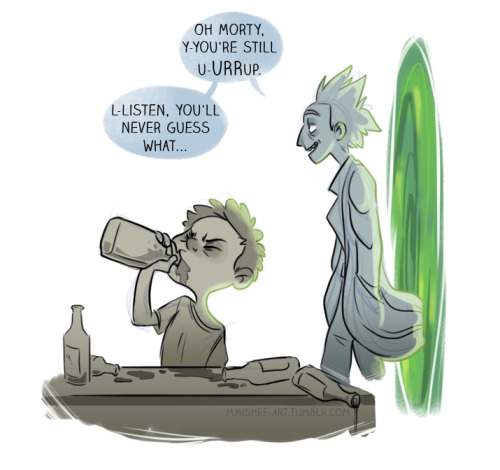
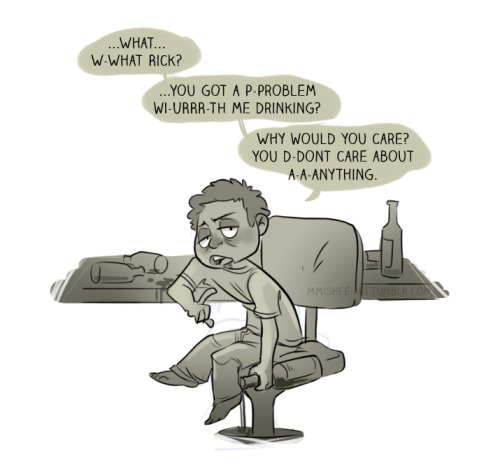
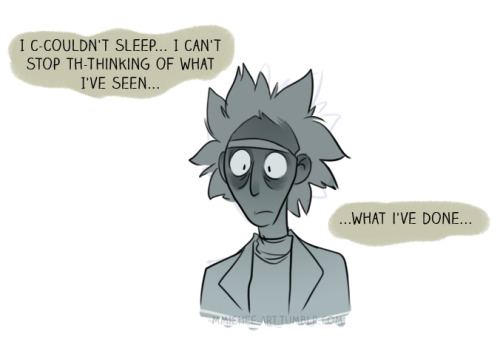
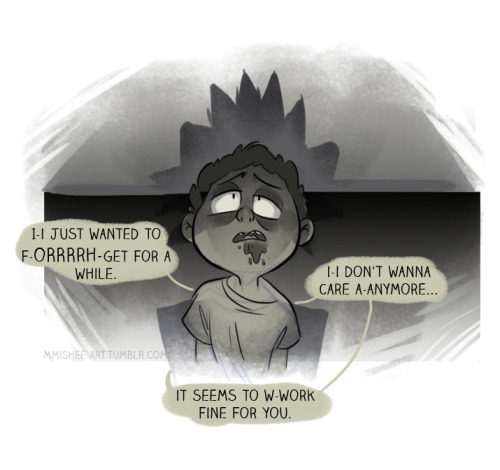
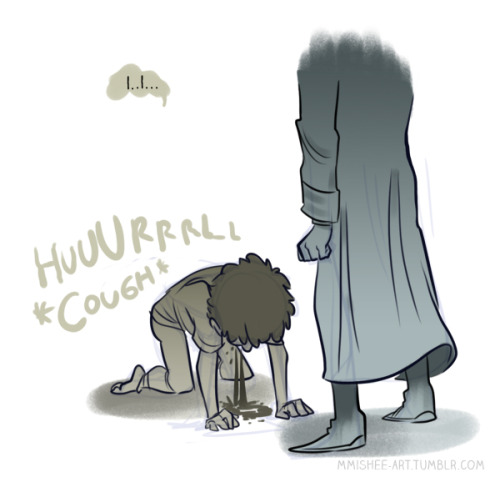

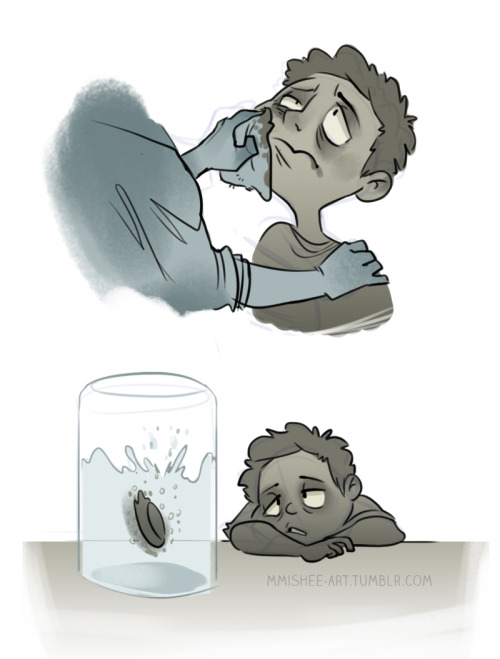

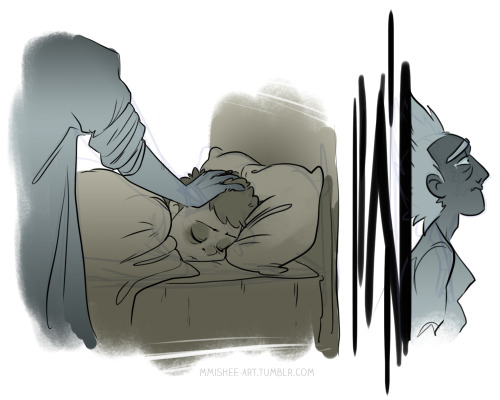

I continued with the ‘Morty is going to turn into Rick’ theme.
Cause I love hurting myself and I’m taking you all with me.
・✿ヾ╲(。◕‿◕。)╱✿・゚
You love fighting this villian. Because even thought he has immense powers he’s quite fun to actually battle, quite chill when you thwart his plans, and a bit incompetent when it comes to villiany. The problem is that now his mother is here.
Snakes are so cute though!
Itsy Bitsy Spider: Fear of spiders and snakes is deeply embedded in us
Snakes and spiders evoke fear and disgust in many people. Even in developed countries lots of people are frightened of these animals although hardly anybody comes into contact with them. Until now, there has been debate about whether this aversion is innate or learnt. Scientists at the Max Planck Institute for Human Cognitive and Brain Sciences (MPI CBS) in Leipzig and the Uppsala University have recently discovered that it is hereditary: Babies as young as six months old feel stressed when seeing these creatures—long before they could have learnt this reaction.

Presumably, in Germany most people have never come across a poisonous spider or snake in the wild. Here in this country there are no spiders that pose a threat to humans. Likewise for snakes there are just two species that are indeed poisonous but they are so rare that you hardly ever encounter them. Nevertheless, there are few people that would not shiver at the thought of a spider crawling up their arm, however harmless it may be.
This fear can even develop into anxiety which limits a person’s daily life. Such people are always on edge and cannot enter a room before it is declared “spider free” or cannot venture out into nature for sheer fear that they may encounter a snake. In developed countries one to five per cent of the population are affected by a real phobia of these creatures.
Until now, it was not clear where this widespread aversion or anxiety stems from. While some scientists assume that we learn this fear from our surroundings when we are a child, others suppose that it is innate. The drawback of most previous studies on this topic was that they were conducted with adults or older children—making it hard to distinguish which behaviour was learnt and which was inborn. Such studies with children only tested whether they spot spiders and snakes faster than harmless animals or objects, not whether they show a direct physiological fear reaction.
Scientists at the Max Planck Institute for Human Cognitive and Brain Sciences (MPI CBS) in Leipzig and the Uppsala University, Sweden, recently made a crucial observation: Even in infants a stress reaction is evoked when they see a spider or a snake. And this already at the age of six months, when they are still very immobile and have had little opportunity to learn that these animals can be dangerous.
“When we showed pictures of a snake or a spider to the babies instead of a flower or a fish of the same size and colour, they reacted with significantly bigger pupils”, says Stefanie Hoehl, lead investigator of the underlying study and neuroscientist at MPI CBS and the University of Vienna. “In constant light conditions this change in size of the pupils is an important signal for the activation of the noradrenergic system in the brain, which is responsible for stress reactions. Accordingly, even the youngest babies seem to be stressed by these groups of animals.”
“We conclude that fear of snakes and spiders is of evolutionary origin. Similar to primates, mechanisms in our brains enable us to identify objects as ‘spider’ or 'snake’ and to react to them very fast. This obviously inherited stress reaction in turn predisposes us to learn these animals as dangerous or disgusting. When this accompanies further factors it can develop into a real fear or even phobia. "A strong panicky aversion exhibited by the parents or a genetic predisposition for a hyperactive amygdala, which is important for estimating hazards, can mean that increased attention towards these creatures becomes an anxiety disorder.”
Interestingly, it is known from other studies that babies do not associate pictures of rhinos, bears or other theoretically dangerous animals with fear. “We assume that the reason for this particular reaction upon seeing spiders and snakes is due to the coexistence of these potentially dangerous animals with humans and their ancestors for more than 40 to 60 million years—and therefore much longer than with today’s dangerous mammals. The reaction which is induced by animal groups feared from birth could have been embedded in the brain for an evolutionarily long time.
For modern risks such as knives, syringes or sockets, presumably the same is true. From an evolutionary perspective they have only existed for a short time, and there has been no time to establish reaction mechanisms in the brain from birth. "Parents know just how difficult it is to teach their children about everyday risks such as not poking their fingers into a socket”, Hoehl adds with a smile.
The best babysitter


other fav character this season tho B)

Carl Sagan, who would’ve been 83 today, on the power of books and why reading is essential for democracy.
Consider A Pet Monkey

-
 medievalmenagerie liked this · 11 months ago
medievalmenagerie liked this · 11 months ago -
 scrapshota liked this · 11 months ago
scrapshota liked this · 11 months ago -
 queering-it-up reblogged this · 11 months ago
queering-it-up reblogged this · 11 months ago -
 xxdrwhovianxx reblogged this · 11 months ago
xxdrwhovianxx reblogged this · 11 months ago -
 xxdrwhovianxx liked this · 11 months ago
xxdrwhovianxx liked this · 11 months ago -
 bnprime reblogged this · 11 months ago
bnprime reblogged this · 11 months ago -
 gatito-fantasma liked this · 11 months ago
gatito-fantasma liked this · 11 months ago -
 space-librarian reblogged this · 11 months ago
space-librarian reblogged this · 11 months ago -
 loudprincefun liked this · 1 year ago
loudprincefun liked this · 1 year ago -
 we-walk-today liked this · 1 year ago
we-walk-today liked this · 1 year ago -
 daedally liked this · 1 year ago
daedally liked this · 1 year ago -
 spinunwesidi liked this · 1 year ago
spinunwesidi liked this · 1 year ago -
 carmensanders liked this · 1 year ago
carmensanders liked this · 1 year ago -
 valerioeliogabalotorrisi liked this · 1 year ago
valerioeliogabalotorrisi liked this · 1 year ago -
 sarahs-shadow reblogged this · 1 year ago
sarahs-shadow reblogged this · 1 year ago -
 korbin-arts liked this · 2 years ago
korbin-arts liked this · 2 years ago -
 johnlockifconvenient reblogged this · 2 years ago
johnlockifconvenient reblogged this · 2 years ago -
 johnlockifconvenient liked this · 2 years ago
johnlockifconvenient liked this · 2 years ago -
 inikokoru reblogged this · 2 years ago
inikokoru reblogged this · 2 years ago -
 inikokoru liked this · 2 years ago
inikokoru liked this · 2 years ago -
 do-not-pray-for-me reblogged this · 2 years ago
do-not-pray-for-me reblogged this · 2 years ago -
 do-not-pray-for-me liked this · 2 years ago
do-not-pray-for-me liked this · 2 years ago -
 whataboutthefish reblogged this · 2 years ago
whataboutthefish reblogged this · 2 years ago -
 jack-a-nape reblogged this · 2 years ago
jack-a-nape reblogged this · 2 years ago -
 shinsandtins liked this · 2 years ago
shinsandtins liked this · 2 years ago -
 hirmu reblogged this · 2 years ago
hirmu reblogged this · 2 years ago
